Are you looking for the best AI photo editing software? Do you want to easily transform your images, enhance colors, retouch portraits, and apply artistic effects? There is no need to look any further! In this comprehensive guide, we will look at the best AI photo editing software on the market.
Whether you’re a beginner or a pro, these AI-powered editing tools will help you improve your photo editing skills. Prepare to unleash your creativity and improve your photo editing skills!
Editing photos could be time-consuming and boring, especially if you are not an experienced photographer.
AI photo editing software uses artificial intelligence and machine learning algorithms to automatically enhance and adjust photos to your liking.
In this article, I’ll go over the best AI photo editing software on the market so you can find the one that’s right for you.
We’ve seen the best AI software for video editing, generating images, students, recruiting, business, and credit repair in recent articles. Let’s take a look at some of the best AI photo editing software available today in this article:
What is AI Photo Editing Software?

The use of artificial intelligence technology to enhance, modify, and transform digital images is referred to as AI photo editing software.
It uses machine learning algorithms and deep neural networks to automate various aspects of the editing process, including color correction, exposure adjustments, retouching, and the application of artistic effects.
By analyzing patterns, recognizing objects, and comprehending image content, AI algorithms can intelligently make editing decisions to improve the overall quality and aesthetics of photos.
How Does AI Technology Enhance Photo Editing?
AI technology improves photo editing by analyzing and learning from large datasets of images. AI algorithms learn about visual patterns, styles, and artistic elements through a process known as training.
This enables them to make informed decisions about image enhancement and transformation. AI-powered editing tools can automate time-consuming and tedious tasks, make intelligent recommendations, and apply sophisticated adjustments with minimal user intervention.
AI technology is revolutionizing the way we edit photos, from simple corrections to complex artistic effects.
Advantages of Using AI Photo Editing Software
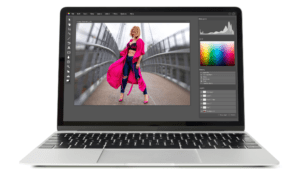
Using AI Photo editing software offers several advantages for photographers and photo enthusiasts:
- Time Savings: AI algorithms can analyze and process images much faster than humans, reducing the time spent on repetitive editing tasks.
- Efficiency: With automated features and intelligent recommendations, AI software streamlines the editing workflow, making it more efficient and productive.
- Consistency: AI algorithms apply adjustments consistently across multiple images, ensuring a cohesive look and feel throughout a photo series.
- Intelligent Enhancements: AI-powered editing tools can intelligently enhance colors, tones, and details, resulting in visually stunning images.
- Creative Possibilities: AI software offers a wide range of artistic effects and styles, allowing photographers to experiment and explore new creative avenues.
- User-Friendly Interface: Many AI photo editing software options feature intuitive interfaces and user-friendly controls, making them accessible to beginners and professionals alike.
- Automatic Retouching: AI algorithms can automatically retouch portraits, removing blemishes, smoothing skin tones, and enhancing facial features.
- Object Removal: Advanced AI-powered editing tools can intelligently remove unwanted objects from photos, seamlessly filling in the background.
- Batch Processing: AI software often supports batch processing, enabling users to apply edits to multiple images simultaneously, saving time and effort.
- Real-Time Previews: AI editing tools provide real-time previews, allowing users to see the effects of adjustments instantly.
What Is The Best AI Photo Editing Software?
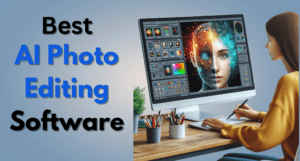
Here is the best AI photo editing software for editing your photos in 2024:
1. Luminar AI
Best Overall AI Photo Editing Software.
Skylum Luminar is a ground-breaking AI-powered photo editor with over 20 unique features and effects for photographers of all skill levels.
Skylum Luminar is distinguished by its innovative SkinAI and FaceAI technologies, which are ideal for fashion makeup portrait photography.
Users can achieve spectacular results by bringing images to life with a single click.
It is compatible with both MacOS and Windows, making it simple to create one-of-a-kind photographs in no time.
Skylum Luminar also comes with a plethora of powerful editing tools that allow users to achieve specific results.
This software has something for everyone, from adjusting colors and contrast to whitening teeth and removing blemishes.
With its simple user interface, even inexperienced photographers can quickly learn how to use its various features and begin creating stunning images.
Key Features
- Sky Replacement: You can change the sky in your photos with a single click using this tool. You can select from a number of pre-installed skies or upload your own. To match the new sky, Luminar will automatically adjust the lighting, colors, and perspective of the scene.
- AI Structure: It improves the details and textures of your photographs without changing the skin tones or adding noise. You can customize the amount and direction of the effect to your liking.
- Skin Enhancer & Portrait Enhancer: These tools allow you to enhance the appearance of your subjects with little effort. To a few sliders, you can smooth the skin, remove blemishes, whiten teeth, brighten eyes, and more.
- Augmented Sky: You can use this feature to add unique elements to your sky, such as birds, clouds, planes, or even planets. You can easily resize, position, and blend them into the background.
- AI Erase: With a single brushstroke, you can remove unwanted objects or distractions from your photos. Based on the surrounding pixels, Luminar will fill in the gaps with realistic content.
Pros
- Easy to use interface with intuitive controls and presets.
- Powerful AI tools that save time and produce realistic results.
- Non-destructive editing with layers and masks.
- Works as a standalone application or a plugin for Adobe and Apple products.
- Compatible with Windows and macOS.
Cons
- Skylum Luminar requires a relatively high-end computer to run smoothly.
- Some features may not work well on complex or low-quality images.
- Lacks some advanced tools such as curves, histograms, or color grading.
- No mobile version or cloud storage available.
Pricing
Luminar AI offers the pricing plans:
- Explore: $9.95/mo
- Pro: $6.21/mo
- Lifetime: 179$
💡 Related guide: 13 Best AI Tools for Affiliate Marketing in 2024
2. Adobe Photoshop
Best For Photo Editing Validity.
Adobe Photoshop has a wide range of features that allow users to manipulate images in a variety of ways.
Adobe Photoshop has something for everyone, regardless of image editing skill level.
Photoshop has the tools you need to quickly and easily retouch portraits or design graphics from scratch.
You can also use its filters and effects to enhance and professionalize your images without spending too much time learning complex techniques.
Adobe Photoshop should be at the top of the list for photographers, graphic designers, and illustrators looking for the best AI photo editing software available today.
It’s quick, efficient, and extremely versatile, making it ideal for creating eye-catching visuals.
Key Features
Some of the key features of Photoshop that use AI are:
- Generative Fill (beta): This is an incredible generative AI tool that allows you to perform complex edits using simple text prompts. You can add, extend, or remove content from your images without affecting the quality. You can, for example, type “remove the building” or “add a sunset” and watch the magic happen. Photoshop (beta) currently supports this feature.
- Neural Filters: It is a collection of filters that use neural networks to transform your images in a variety of ways. With a few clicks, you can change your subject’s facial expression, age, hair thickness, skin smoothness, and more.
- Adjustment Presets: These are 30 new presets that allow you to quickly change the look of your image. Hover over the presets to preview them, then click to apply the one you prefer.
- Remove Tool: This is a tool that uses intelligent technology to automatically fill in the background while preserving object details and depth in complex backgrounds.
- Contextual Task Bar: This is a feature that suggests possible next steps in your workflow based on what you’re doing right now. It assists you in achieving your desired outcome more quickly by providing recommendations that you can access directly from the menu.
- Gradient Tool: It is an improved tool that makes it easier to find and apply gradients to your images. Before applying, you can use the new on-canvas controls and live preview to fine-tune the colors and blend.
Pros
- Photoshop offers a wide range of tools and features for any kind of photo editing task.
- It integrates well with other Adobe products like Lightroom, Illustrator, and Adobe Express.
- Adobe also supports various file formats, layers, masks, filters, brushes, and plugins.
- Photoshop has a large and active community of users and experts who provide tutorials, tips, and support.
- It has a free trial version and a student discount option.
Cons
- Photoshop can be expensive for some users, especially if they need multiple Adobe products.
- It can be complex and overwhelming for beginners or casual users.
- Photoshop can be resource-intensive and require a powerful computer system.
- Adobe may not have some specific features or tools that other niche photo editing software have.
- It may have some bugs or compatibility issues with some devices or operating systems.
Pricing
Photoshop costs $20.99 per/mo.
Photoshop is one of the best AI photo editing software in 2023, with a variety of tools and features to assist you in creating stunning images.
Get Started With Adobe Photoshop.
💡 Related guide: 27 Best & Highest-Paying AI Affiliate Programs in 2024
3. Corel PaintShop Pro.
Best For Font Customization.
When first starting out, Corel PaintShop Pro provides a plethora of painting software options.
It also includes a slew of pre-installed brushes, textures, and backgrounds.
PaintShop Pro comes with 50 free modern fonts, allowing you to quickly add text or titles to any image or video project.
These fonts provide a plethora of options for spicing up your work, whether you’re creating a meme or designing a logo.
Furthermore, AI-powered workspaces make it simple to touch up portraits and add features to photos.
PaintShop Pro has all the tools you need to make your images look amazing, whether you’re a beginner or an experienced photo editor.
Key Features
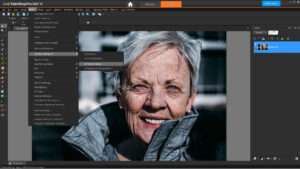
- Portrait Mode: Automatically detect and adjust facial features, skin tone, and lighting to create flawless portraits in seconds.
- AI Background Replacement: Easily change the background of any photo with a single click, or use the Refine Brush to fine-tune the selection.
- Style Transfer: Transform your photos into works of art with the style of famous painters, or create your own custom styles.
- Upsampling: Enlarge any image without losing quality or detail, using deep neural networks.
- Denoise: Remove noise and artifacts from low-light or high-ISO photos, while preserving details and colors.
- Artifact Removal: Erase unwanted objects, blemishes, or distractions from any photo with smart content-aware technology.
- Layers and Masks: Work with multiple layers and masks to create complex compositions and adjust them independently.
- RAW Editing: Process and edit RAW files from any camera with the Camera RAW Lab.
- Graphic Design Tools: Create logos, web graphics, flyers, and more with vector illustration tools, text effects, gradients, patterns, and brushes.
- Photo Management: Organize, rate, tag, and find your photos quickly with the built-in Photo Organizer.
Pros
- Affordable one-time purchase with no subscription fees.
- Both raster and vector image formats are supported.
- Photoshop plugins and brushes are supported.
- It provides a free 30-day trial version.
Cons
- Interface may be cluttered and overwhelming for some users
- Lacks some advanced features like 3D modeling, animation, and video editing
- May not be compatible with the latest operating systems or hardware
Pricing
PaintShop Pro 2023 Ultimate costs $99.99 for the full version, or $79.99 to upgrade from a previous version.
💡 Related guide: 11+ Best AI Video Editing Software ( Ranked & Reviewed)
4. Adobe Lightroom.
Best For Applying Predefined Filters.
Adobe Lightroom is the ideal all-in-one photo editing solution.
This software allows you to quickly and easily adjust the exposure and color settings of your photos, as well as explore over 100 preset filters.
It also provides useful insights through step-by-step tutorials curated within the app.
Lightroom has an easy-to-use user interface for beginners, so anyone can quickly advance their photography skills.
There are numerous advanced tools available to help more experienced photographers fine-tune any image.
Adjust colors and tones with the HSL sliders, or use selective adjustments to create custom looks for different areas of an image.
For even more precise editing, you can trim video clips using sliders and presets.
Plus, because Lightroom can sync across devices, you can take it with you wherever you go to edit photos on the go.
Key Features
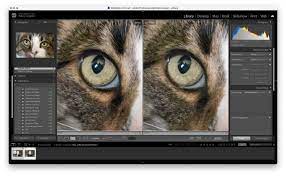
- Nondestructive edits: You can apply sliders and filters to your photos without altering the original files. You can also undo or redo any changes easily.
- Integrated AI organization: The platform allows you to manage and share your photos with ease, as Lightroom automatically sorts them by date, location, people, keywords, and more. You can also create albums, collections, and galleries to showcase your work.
- Adaptive presets: You can choose from a variety of presets that suit different styles and moods. You can also create your own presets or import them from other sources. Lightroom adapts the presets to each photo based on its content and lighting.
- Masking tools: It also let you selectively edit specific parts of your photos with precision and control. You can use the AI-powered Select Subject and Select People tools to quickly isolate the main subject or people in your photos.
- Curves: You can fine-tune the contrast, tone, and color of your photos with the Curves tool. You can adjust the overall curve or create point curves for each color channel.
- Cloud storage: With the help of this tool you can access your photos from any device with an internet connection, as Lightroom syncs them to the cloud.
Pros
- Easy to use interface with intuitive tools
- Powerful AI features that simplify and enhance editing
- Seamless integration with other Adobe products and services
- Compatible with various file formats and devices
- Regular updates and improvements
Cons
- Requires a subscription fee and internet connection
- Limited local adjustment options compared to Lightroom Classic
- May not support some older cameras or lenses
Pricing

Lightroom offers two plans:
- Lightroom (1TB): $9.99/mo.
- Photography (1TB): $19.99/mo.
Transform Your Images with the Best AI Editing Tools: Unlock the Power of AI 🖌️🔓
Intelligent image enhancement: Watch your photos come alive as the best AI software automatically enhances colors, sharpness, and details, ensuring your images truly shine.
Instant image transformations: Experience the magic of AI as it effortlessly adjusts exposure, contrast, and other essential parameters with just a few clicks, saving you time and effort.
Object removal made easy: Say goodbye to unwanted elements in your photos with AI-assisted object removal, allowing you to achieve clean and visually appealing compositions.
Fine-tune with precision: Take control of every aspect of your editing process with AI-powered tools that enable precise adjustments, giving you the freedom to create your desired look.
Choose Wisely: Comparing the Best AI Software for Photo Editing ✅🤔
Extensive feature comparison: Make an informed decision by comparing the key features and capabilities of the leading AI software options available, ensuring you choose the one that aligns with your specific needs.
User reviews and ratings: Benefit from the experiences of fellow photographers and editors by exploring user reviews and ratings, gaining valuable insights to guide your decision-making process.
Consider your workflow: Evaluate how each AI software integrates into your existing workflow, ensuring a seamless transition and compatibility with your preferred editing tools and platforms.
Free trials and demos: Take advantage of free trials or demos offered by the best AI software providers to get hands-on experience and determine which option suits your editing style and preferences.
Streamline Your Editing Workflow: Best AI Software for Efficient Photo Editing ⚡💻
Time-saving automation: Optimize your editing workflow with AI-powered automation features that handle repetitive tasks, allowing you to focus on the creative aspects of your work.
Simplified organization: Keep your photo library in order with AI-assisted organization tools that help you categorize, tag, and search for images effortlessly, saving you valuable time and effort.
Seamless collaboration: Collaborate seamlessly with other photographers, clients, or team members using the best AI software that offers easy sharing, commenting, and version control features.
Cross-platform compatibility: Ensure the AI software of your choice is compatible with your preferred devices and operating systems, enabling you to work seamlessly across multiple devices and environments.
Can AI Software Automatically Retouch Photos?

Yes, AI software can retouch photos automatically. AI-powered photo editing tools can identify facial features, skin tones, and imperfections by utilizing facial recognition algorithms and machine learning techniques.
They can then use retouching techniques to automatically improve the appearance of portraits.
With a few simple clicks, these tools can smooth skin, reduce blemishes, improve skin tones, brighten eyes, and enhance facial features.
When working with large batches of portrait photos, automatic retouching saves time and effort.
💡 Related guide: 13 Best Issue-Tracking Software of 2024
Accuracy of AI in Recognizing and Enhancing Images
AI algorithms have made significant progress in accurately recognizing and enhancing images. AI models can detect and understand various elements in a photograph, including objects, landscapes, textures, colors, and much more, thanks to specialized training on massive image datasets. Because of this comprehension, AI-powered editing software can make intelligent decisions when applying enhancements and adjustments.
It is important to note, however, that AI algorithms are not perfect and may occasionally make mistakes. Lighting conditions, image quality, and complex scenes can all pose difficulties for AI models. While AI technology advances, it is advisable to review and fine-tune the automated adjustments made by AI software to ensure the desired outcomes.
Can AI Software Replace Manual Photo Editing Skills?
Although AI software provides impressive automation and intelligent editing capabilities, it cannot completely replace manual photo editing skills. Manual editing techniques that require a human touch and artistic vision, such as fine-tuning exposure, adjusting composition, and trying to apply creative effects, require a skilled human touch and artistic vision.
However, AI software can significantly supplement and improve manual editing workflows. It automates repetitive tasks, makes suggestions based on learned patterns, and serves as a jumping off point for creative exploration. Photographers can save time, improve efficiency, as well as achieve consistent results by leveraging AI tools. The combination of AI and manual editing skills allows photographers to produce their best work.
Top Features to Look for in AI Photo Editing Software

When evaluating AI photo editing software, consider the following features that can enhance your editing experience and productivity:
- AI-Powered Enhancements: Look for software that offers AI-powered enhancements, such as automatic exposure correction, intelligent color grading, and detail enhancement.
- Intuitive Interface: Choose software with a user-friendly interface that is easy to navigate and understand. A well-designed interface can help streamline your editing workflow and save time.
- Selective Editing Tools: Advanced AI photo editing software often includes selective editing tools that allow you to apply adjustments to specific areas of an image.
- Artistic Effects and Styles: Look for software that offers a variety of artistic effects and styles. This allows you to experiment with different looks and create unique visual expressions.
- Batch Processing: If you frequently work with a large number of images, software with batch processing capabilities is essential.
- Non-Destructive Editing: Non-destructive editing allows you to make changes to your images without permanently altering the original file.
- Integration with Social Media Platforms: Some AI photo editing software offers seamless integration with popular social media platforms.
- Customizable Presets: Look for software that allows you to create and save custom presets.
- Real-Time Editing Previews: Real-time previews allow you to see the effects of adjustments instantly, providing a visual feedback loop as you edit.
- Compatibility and File Support: Ensure that the AI photo editing software you choose is compatible with your operating system (e.g., Windows, macOS) and supports the file formats you commonly work with, such as JPEG, PNG, and RAW.
Keep in mind that your individual requirements and preferences may influence which features are most important to you. When choosing AI photo editing software, keep your workflow, editing style, and image types in mind.
How Does AI Technology Improve Photo Manipulation Techniques?

AI technology significantly improves photo manipulation techniques by automating complex tasks and providing intelligent tools. Here’s how AI enhances photo manipulation:
- Object Removal: AI-powered editing tools can intelligently identify and remove unwanted objects from images. By analyzing the surrounding pixels and filling in the gaps seamlessly, these tools can erase distractions or undesired elements with precision.
- Perspective Correction: AI algorithms can detect perspective distortions in images and automatically correct them. This is particularly useful for architectural photography or images where straight lines need to be aligned accurately.
- Noise Reduction: AI-powered noise reduction algorithms can effectively reduce noise in images while preserving details. By learning from large datasets, AI models can distinguish between noise and actual image content, resulting in cleaner and sharper photos.
- Selective Editing: AI technology enables selective editing by automatically identifying and isolating different elements in an image. This allows for targeted adjustments, such as altering the exposure of specific objects or adjusting the colors in specific areas.
- Content-Aware Fill: AI algorithms can intelligently fill in missing or empty areas of an image with relevant content. This feature is particularly useful when removing objects or distractions from photos, as AI can generate realistic replacements.
- Photo Restoration: AI-powered photo editing software can restore old or damaged photos by automatically repairing cracks, tears, and color degradation. By learning from examples of well-preserved images, AI models can reconstruct missing details and restore the original look of the photo.
AI technology speeds up the editing process by automating these manipulative tactics, allowing photographers to achieve more accurate and consistent results.
💡 Related guide: Top 13 Best AI Recruiting Tool for future-proof hiring process
Limitations and Drawbacks of AI Photo Editing Software
While AI photo editing software offers numerous benefits, it’s important to be aware of some limitations and drawbacks:
- Overreliance on Automation: Relying too heavily on AI automation may result in images that look generic or lack a personal touch. It’s important to find a balance between automated adjustments and manual fine-tuning to maintain your artistic vision.
- Learning Curve: AI photo editing software can have a learning curve, especially when exploring advanced features or complex editing techniques. It may take time to familiarize yourself with the software’s interface and capabilities.
- Resource Intensive: AI algorithms require computational resources to process and analyze images. Running AI-powered editing software on older or less powerful computers may result in slower performance or limited functionality.
- Occasional Inaccuracies: While AI algorithms have made significant progress, they are not flawless. In certain situations, AI may misinterpret image content or make incorrect adjustments. It’s important to review and refine automated edits to achieve the desired results.
- Privacy Concerns: Some AI photo editing software requires uploading images to cloud servers for processing. This raises privacy concerns, especially when dealing with sensitive or confidential images. Ensure that you are comfortable with the data handling practices of the software provider.
- Limited Customization: AI-powered editing tools often rely on predefined algorithms and models, limiting the extent of customization. Users may have less control over the fine details of adjustments compared to manual editing techniques.
Understanding these limitations and drawbacks can help you make informed decisions and set realistic expectations when using AI photo editing software.
AI Algorithms Used in Photo Editing Software

AI photo editing software relies on various algorithms to analyze, understand, and enhance images. Here are some commonly used AI algorithms:
- Convolutional Neural Networks (CNNs): CNNs are widely used for image recognition and classification tasks. They analyze the content of images by applying a series of convolutional filters to detect features and patterns. CNNs are used in AI photo editing software for tasks such as object recognition, segmentation, and content-aware fill.
- Generative Adversarial Networks (GANs): GANs consist of two neural networks, a generator and a discriminator, that compete against each other. GANs are used in AI photo editing software to generate realistic textures, apply style transfers, and create unique artistic effects.
- Recurrent Neural Networks (RNNs): RNNs are designed to analyze sequential data and have been applied to image captioning and automatic image retouching. RNNs can learn from the relationship between different pixels in an image and generate realistic and context-aware retouching suggestions.
- Deep Reinforcement Learning: Deep reinforcement learning combines deep neural networks with reinforcement learning techniques to train AI models through trial and error. In photo editing software, this approach can be used to optimize adjustment parameters and create personalized editing styles.
- Transfer Learning: Transfer learning is a technique that allows AI models to leverage knowledge learned from one task and apply it to another related task. In the context of photo editing software, transfer learning can enable models to generalize from a large dataset of edited images to enhance and retouch new images.
These are just a few of the AI algorithms that can be found in photo editing software. The field of artificial intelligence research is constantly evolving, and new algorithms and techniques are being developed to improve the capabilities of AI-powered editing tools.
💡 Related guide: 13 Best AI Tools for Sales: Boost your revenue overnight!
AI-Powered Photo Editing vs. Traditional Editing Techniques

AI-powered photo editing and traditional editing techniques each have their strengths and limitations. Here’s a comparison between the two:
AI-Powered Photo Editing:
- Speed and Efficiency: AI algorithms can analyze and process images at incredible speed, enabling quick and automated adjustments. This saves time compared to manual editing techniques.
- Automation and Intelligence: AI-powered editing tools can automatically enhance images, make intelligent adjustments, and provide recommendations based on extensive training data. This can simplify the editing process and provide consistent results.
- Advanced Capabilities: AI software offers advanced features, such as content-aware fill, object removal, and intelligent noise reduction, that are difficult or time-consuming to achieve manually.
Traditional Editing Techniques:
- Artistic Control: Manual editing techniques provide photographers with full artistic control over each adjustment. Photographers can fine-tune every aspect of the image to achieve their desired creative vision.
- Personal Touch: Traditional editing techniques allow photographers to bring their unique style and interpretation to each image. Manual adjustments can add a personal touch and create a distinct visual signature.
- Fine Detail Editing: Manual editing techniques offer precise control over specific details of an image. This can be especially important for intricate retouching, localized adjustments, or complex compositing.
Both AI-powered photo editing and traditional photo editing techniques have a place in the world of photography. Many photographers find that a hybrid approach yields the best results, combining the efficiency and automation of AI-powered tools with the artistic control and personal touch of traditional editing.
Wrap-up
Finally, AI photo editing software provides a plethora of options for photographers of all skill levels. AI technology revolutionizes the editing process and enables photographers to unleash their creative thinking through automated enhancements, object recognition capabilities, artistic filters, and time-saving features.
You can improve your photoshop skills, achieve professional-level results, and streamline your workflow by using AI-powered editing software. There are AI photo editing software packages available to suit your needs, whether you’re a beginner looking for an easy-to-use option or a professional looking for cutting-edge technology.
Remember that, while AI technology is extremely powerful, it is not a substitute for manual editing skills. It is a useful tool that enhances and supplements your creative process. Accept the possibilities of AI-powered photo editing and continue honing your artistic vision to create captivating and inspiring images. Today, improve your photo editing game with the best AI photo editing software!
FAQ’s
Q. What is the best AI photo editing software for professional photographers?
- There is no definitive answer to this question, as different software may suit different needs and preferences. However, some of the most popular and highly rated AI photo editing software for professional photographers are Adobe Photoshop, Luminar Neo, Sharpen AI, and Aurora HDR. These software offer a range of advanced features, such as AI-powered tools, one-click templates, flexible workflows, realistic effects, and more.
Q. Which AI photo editing software offers the most advanced features for enhancing images?
- Again, this may depend on what kind of features you are looking for and how you want to enhance your images. However, some of the AI photo editing software that offer the most advanced features for enhancing images are Adobe Photoshop, Luminar Neo, Sharpen AI, and Aurora HDR. These software can help you with tasks such as sharpening, noise reduction, color correction, exposure adjustment, sky replacement, portrait retouching, and more.
Q. What are the top-rated AI photo editing software options for beginners?
- If you are new to photo editing or want a simple and easy-to-use software, some of the top-rated AI photo editing software options for beginners are Fotor, Canva, PhotoDiva, and PixBim Color Surprise AI. These software have user-friendly interfaces, automatic photo enhancement tools, creative filters and effects, and tutorials and guides to help you get started.
Q. Which AI photo editing software provides the best value for its price?
- This may depend on your budget and how often you use photo editing software. However, some of the AI photo editing software that provide the best value for their price are Luminar Neo, Sharpen AI, PhotoDiva, and Imgkits. These software have affordable pricing plans, free trials or demos, and lifetime licenses or subscriptions.
Q. What is the easiest-to-use AI photo editing software for non-technical users?
- If you are not very familiar with technical terms or complex tools, some of the easiest-to-use AI photo editing software for non-technical users are Fotor, Canva, PhotoDiva, and Imgkits. These software have intuitive interfaces, simple controls, and automatic or one-click edits that can help you achieve stunning results without much hassle.
Q. Which AI photo editing software offers the most accurate and realistic results?
- This may depend on your personal taste and expectations. However, some of the AI photo editing software that offer the most accurate and realistic results are Adobe Photoshop, Luminar Neo, Sharpen AI, and Aurora HDR. These software use advanced algorithms and neural networks to analyze and enhance your photos in a natural and realistic way.
Q. Are there any AI photo editing software programs that specialize in portrait retouching?
- Yes, there are some AI photo editing software programs that specialize in portrait retouching. Some of them are PhotoDiva, Lensa, and Retouchpro.ai. These software can help you improve your selfies or portraits by smoothing skin, removing blemishes, whitening teeth, enhancing eyes, applying makeup, changing hair color, and more.
Q. What are the key differences between popular AI photo editing software options?
- The key differences between popular AI photo editing software options may include their features, functions, interface, pricing, compatibility, support, and reviews. For example, Adobe Photoshop is a powerful and versatile software that can handle any kind of photo editing task but has a steep learning curve and a high price tag. Luminar Neo is a fast and innovative software that can create stunning effects with AI tools but may not have as many options as Photoshop. Fotor is a simple and online-based software that can edit photos with ease but may not have as much control or quality as Photoshop or Luminar Neo.
Q. Are there any AI photo editing software solutions that integrate seamlessly with popular image management platforms?
- Yes, there are some AI photo editing software solutions that integrate seamlessly with popular image management platforms. For example, Adobe Photoshop integrates with Adobe Lightroom, Adobe Bridge, Adobe Creative Cloud, and other Adobe products.
- Luminar Neo integrates with Lightroom Classic CC, Photoshop CC/CS5+, Apple Photos Extension (Mac only), Photos for macOS (Mac only), and other Skylum products. Aurora HDR integrates with Lightroom Classic CC, Photoshop CC/CS5+, Apple Photos Extension (Mac only), Photos for macOS (Mac only), and other Skylum products.
Q. Which AI photo editing software offers a free trial or demo for users to test before purchasing?
- Most of the AI photo editing software offer a free trial or demo for users to test before purchasing. For example, Adobe Photoshop offers a 7-day free trial, Luminar Neo offers a 7-day free trial, Sharpen AI offers a 30-day free trial, PhotoDiva offers a free version with limited features, Mask AI offers a 30-day free trial, PixBim Color Surprise AI offers a free version with watermarks, Imgkits offers a free version with limited credits, Img.
- Upscaler offers a free version with limited resolution, Fotor offers a free version with ads and watermarks, Canva offers a free version with limited features, Lensa offers a 7-day free trial, and Retouchpro.ai offers a free version with watermarks.
Q. What AI photo editing software is recommended for enhancing landscape and nature photography?
- Some of the AI photo editing software that are recommended for enhancing landscape and nature photography are Luminar Neo, Aurora HDR, and Topaz Labs.
- These software have specialized tools and filters for improving the details, colors, and lighting of your outdoor photos. 🌄
Q. Which AI photo editing software provides the best tools for removing unwanted objects or distractions from images?
- Some of the AI photo editing software that provide the best tools for removing unwanted objects or distractions from images are Adobe Photoshop, Fotor, Canva, and Mask AI. These software have powerful and easy-to-use tools that can erase people, text, date stamps, power lines, and other clutter from your photos in seconds. 🚫
Q. Are there any AI photo editing software options that offer batch processing capabilities for editing multiple photos simultaneously?
- Yes, there are some AI photo editing software options that offer batch processing capabilities for editing multiple photos simultaneously.
- Fotor, ImagenAI, Corel Paintshop Pro, and Aurora HDR are a few examples.
- These software have various batch photo editing tools that can help you crop, resize, add text and watermarks, adjust brightness, contrast, and saturation, convert image formats, and more- all in one go! 🚀
Q. Which AI photo editing software is known for its ability to enhance colors and create vibrant images?
- Some of the AI photo editing software that are known for their ability to enhance colors and create vibrant images are Luminar Neo, PixBim Color Surprise AI, ImagenAI, and Corel Paintshop Pro. These software have advanced color correction and enhancement tools that can make your photos pop with vivid and realistic colors. 🌈
Q. Are there any AI photo editing software programs that specialize in black and white photo conversions and toning?
- Yes, there are some AI photo editing software programs that specialize in black and white photo conversions and toning. Some of them are Luminar Neo, Topaz Labs, ImagenAI, and Corel Paintshop Pro. These software have dedicated tools and presets that can help you create stunning black and white photos with different styles and tones. 🖤
Q. What AI photo editing software offers intuitive and user-friendly interfaces for a seamless editing experience?
- Some of the AI photo editing software that offer intuitive and user-friendly interfaces for a seamless editing experience are Fotor, Canva, PhotoDiva, and Lensa. These software have simple and clear interfaces, easy controls, and helpful tutorials and guides that can help you edit your photos without any hassle. 👍
Q. Which AI photo editing software includes advanced masking and selection tools for precise editing?
- Some of the AI photo editing software that include advanced masking and selection tools for precise editing are Adobe Photoshop, Luminar Neo, Sharpen AI, and Mask AI. These software have sophisticated masking and selection tools that can help you isolate specific areas or objects in your photos and apply edits to them without affecting the rest of the image. 🔎
Q. Are there any AI photo editing software options that allow for customizable presets and styles to achieve consistent looks?
- Yes, there are some AI photo editing software options that allow for customizable presets and styles to achieve consistent looks.
- Luminar Neo, Aurora HDR, Topaz Labs, and ImagenAI are a few examples.
- These software have a variety of presets and styles that you can apply to your photos with one click or adjust to your liking. You can also create your own presets and styles or import them from other sources. 💯
Q. What AI photo editing software offers integration with popular social media platforms for easy sharing of edited photos?
- Some of the AI photo editing software that offer integration with popular social media platforms for easy sharing of edited photos are Fotor, Canva, PhotoDiva, and Lensa. These software have built-in features that allow you to share your edited photos directly to Facebook, Instagram, Twitter, Pinterest, or other platforms. You can also save your photos to your device or cloud storage. 📲
Q. Which AI photo editing software is recommended for professional retouchers and advanced editing workflows?
- Some of the AI photo editing software that are recommended for professional retouchers and advanced editing workflows are Adobe Photoshop, Luminar Neo, Sharpen AI, and Aurora HDR. These software have a range of professional and advanced features, such as layers, masks, brushes, curves, histograms, plugins, and more. They also support RAW files and high-resolution images. 💯
Looking for more help with your creative projects? Check out these additional useful articles:
- Top 13 BEST AI Recruiting Tools for Future-proof Hiring Process (2023)!
- 11 BEST AI Marketing Tools to Automate your Business (2023)!
- 7 BEST Credit Repair Software Options: Turbocharge Your Finances in 2023!
- 13+ BEST Transcription Software & Service to Convert Audio/Video to Text (2023)
- 7+ BEST Text-to-Speech Apps for Android in 2023: Even Siri Would Envy!
- Hyperlocal Social Media Marketing; The Secret Sauce To Crushing Your Competitors!
- 13 BEST YouTube Video Downloader Online in 2023 (Free & Paid Options).
- 13 Best YouTube To MP3 Converters of 2023: The Ultimate Soundtrack Snatchers!
- Best Online Courses Platforms: Create & Sell Courses Easily (2023).
- 13 Best YouTube To MP3 Converters of 2023: The Ultimate Soundtrack Snatchers!
- Best AI Image Generator Tools (Ranked for July 2023).
- Best Ecommerce Platforms of 2023: Dominate The Online Market Like A Pro!
- Best AI Website Builders For Creating Professional Websites Quickly In 2023.
- Best Web Hosting Services of 2023.
- Best Landing Page Builders for 2023.
- Best SEO Tools to Rank Your Website in 2023.
- 9+ Best AI Video Editing Software Of 2023 (Ranked & Reviewed)
- 7+ Best Video Editing Software for 2023 (Windows & Mac).
- 7+ Best AI Copywriting Tools for Beginners in 2023 (Ranked & Reviewed).

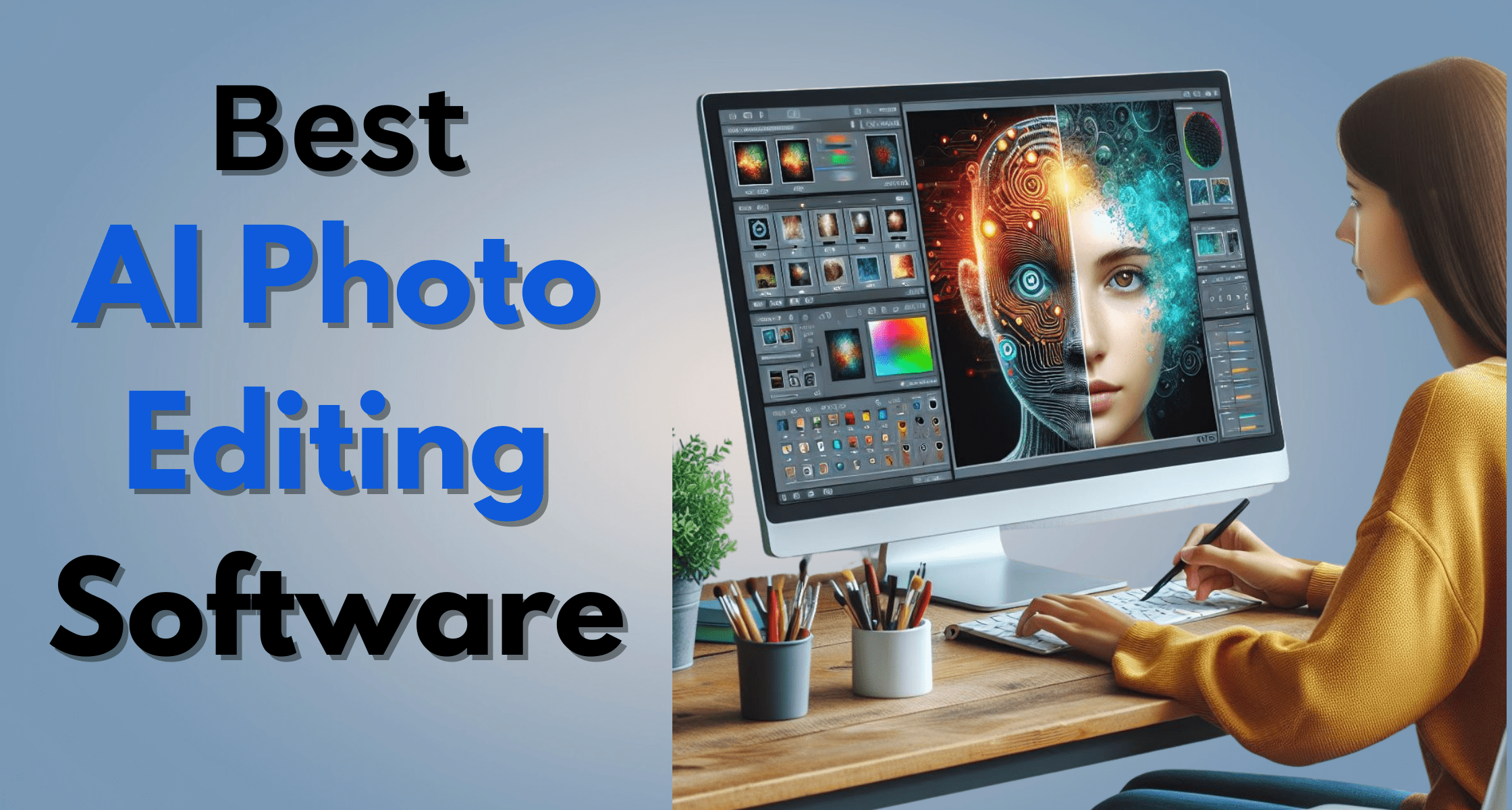


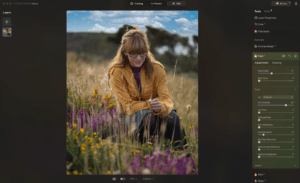










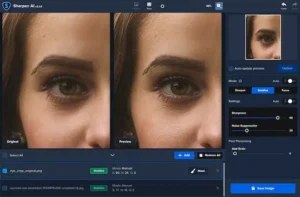


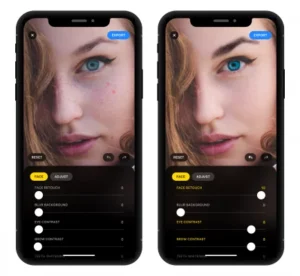





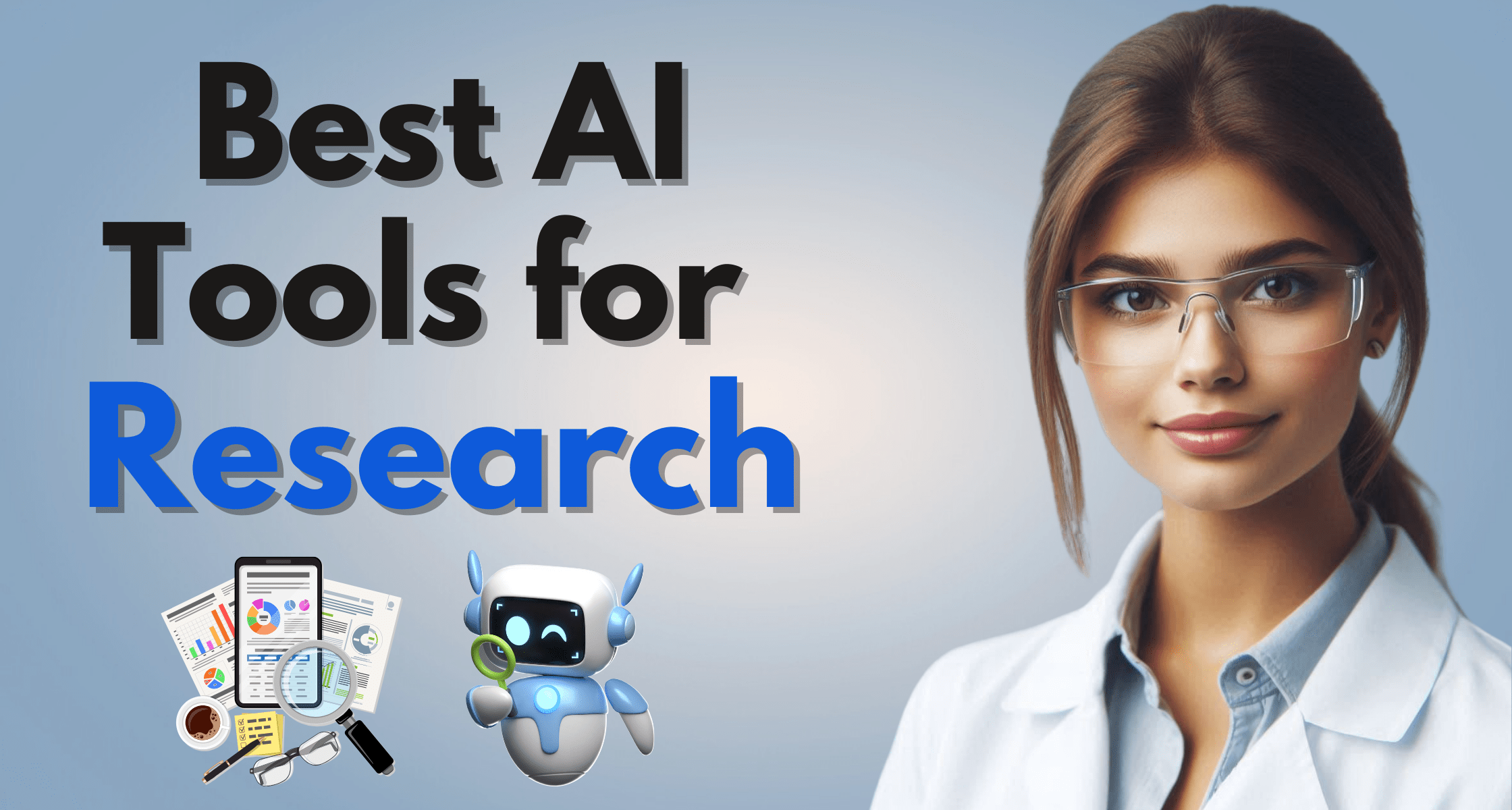




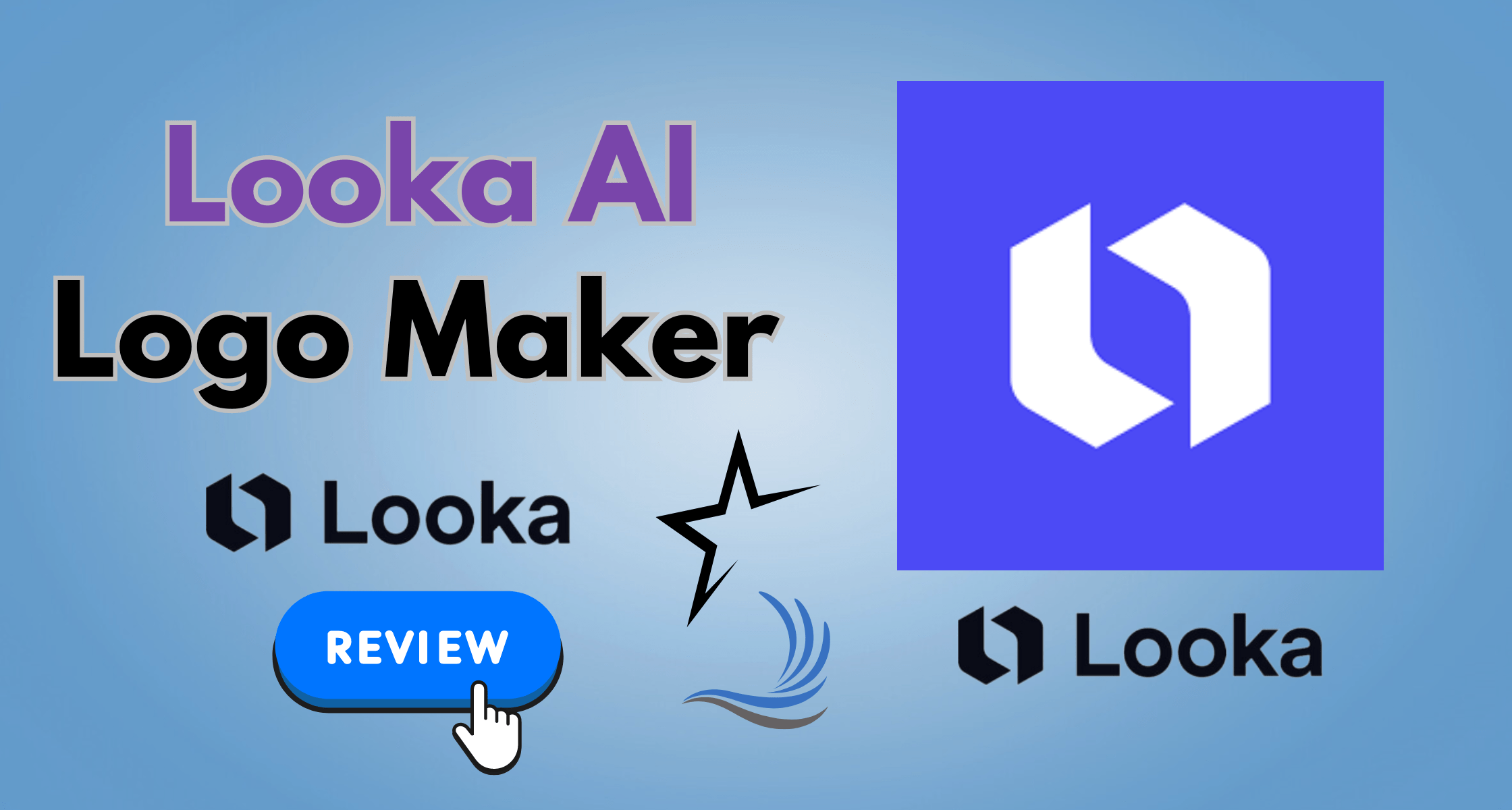

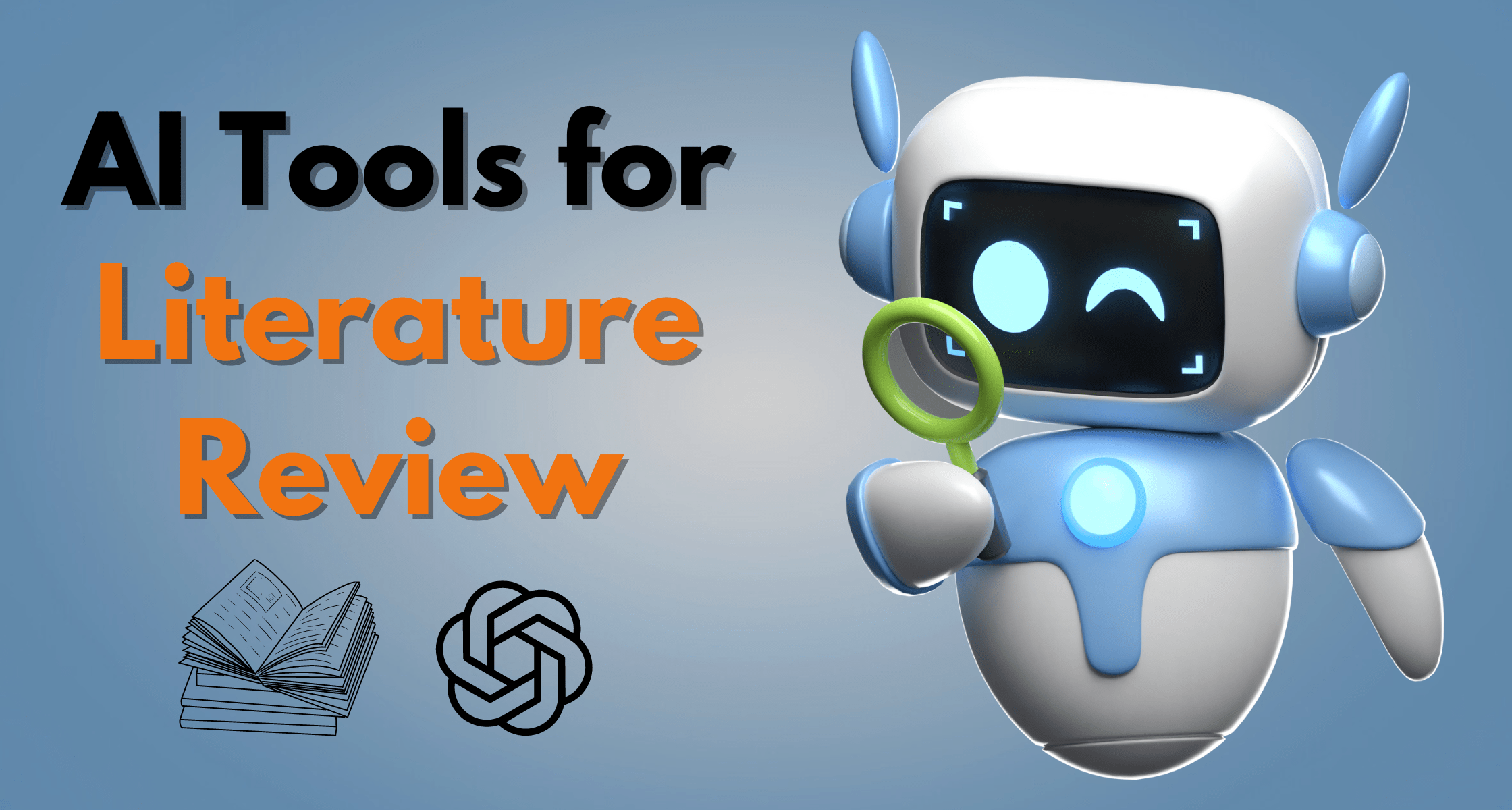

[…] Photo Editors […]
[…] Photo Editors […]
[…] Photo Editors […]
[…] Photo Editors […]
[…] Photo Editors […]
[…] Photo Editors […]
[…] Photo Editors […]
[…] Photo Editors […]
[…] Photo Editors […]
[…] Photo Editors […]
[…] Photo Editors […]
[…] Photo Editors […]
[…] Photo Editors […]
[…] Photo Editors […]
[…] Photo Editors […]
[…] Photo Editors […]
[…] Photo Editors […]
[…] Photo Editors […]
[…] Photo Editors […]
[…] Photo Editors […]
[…] Photo Editors […]
[…] Photo Editors […]